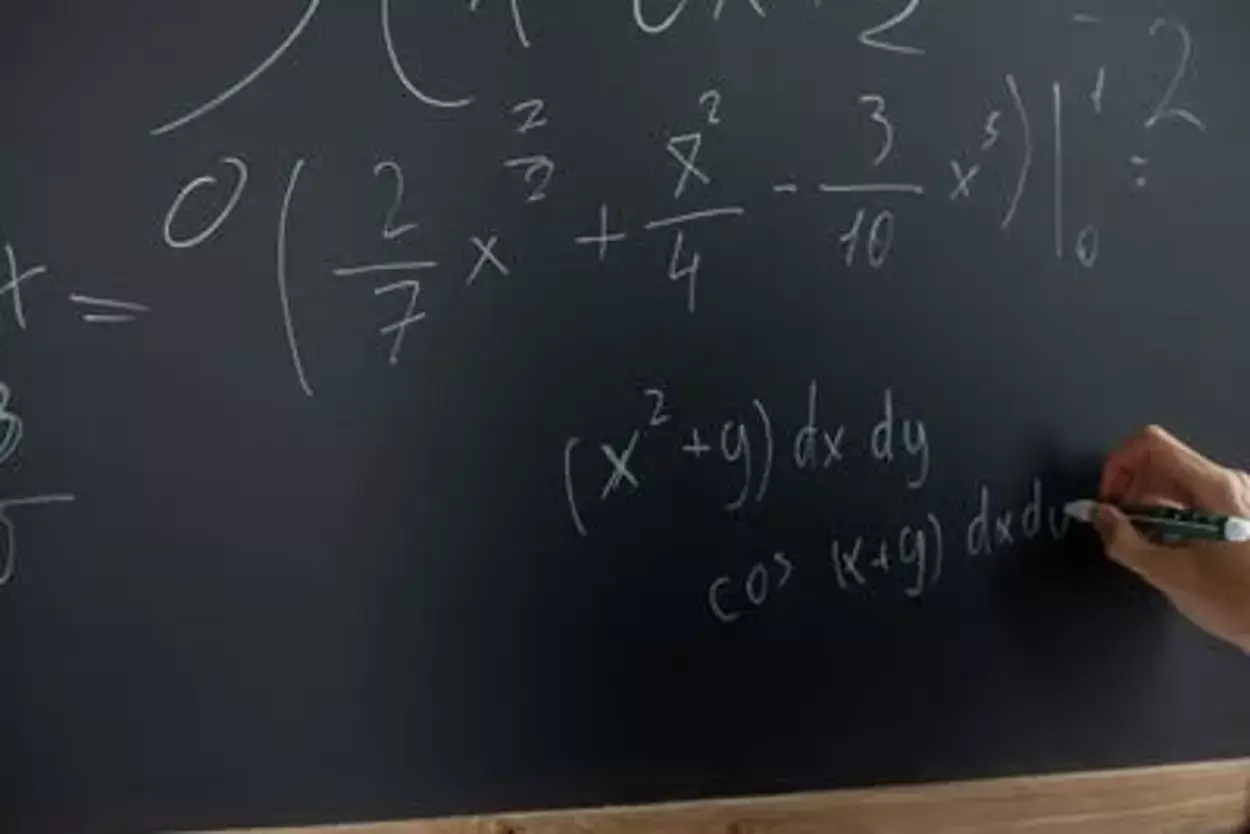An expression constructed using integer constants, variables, and algebraic operations is known as an algebraic expression in mathematics (addition, subtraction, multiplication, division, and exponentiation by an exponent that’s a rational digit).
Contrarily, a polynomial in mathematics is an expression made up of coefficients and indeterminates (also known as variables), and it only makes use of the operations addition, subtraction, multiplication, and non-negative integer exponentiation of variables. x2 +4x + 7 is an illustration of a polynomial with a single indeterminate x.
In this article, you’ll get a clear idea about what is the difference between an algebraic expression and a polynomial, so continue reading.
What is an Algebraic Expression?
The concept of algebraic expressions is the use of letters or alphabets to represent numbers without providing their precise values.
We learned how to express an unknown value using letters like x, y, and z in the fundamentals of algebra. Here, we refer to these letters as variables.
In an algebraic expression, both constants and variables can be employed. A coefficient is any value that is added before a variable and then multiplied by it.
Types of Algebraic expression
Monomial Expression
A monomial is an algebraic expression that contains just one term. Monomial expressions include 3×4, 3xy, 3x, 8y, etc. as examples.
Binomial Expression
An algebraic expression with two terms that differ is known as a binomial expression. Binomial examples are 5xy + 8, xyz + x3 etc.
Polynomial Expression
A polynomial is generally an expression containing more than one term and non-negative integral exponents of a variable. Polynomial expressions include things like 4x3+2x2+5x+3, x3 + 2x + 3, etc.
Numeric Expression
A numeric expression comprises numbers and operations; variables are never present. Examples of mathematical expressions include 10 + 5, 15 – 2, etc.
Variable Expression
An expression with variables is one that uses variables, integers, and an operation to define the expression. 4x + y, 5ab + 33, etc. are a few instances of variable expressions.

What is a Polynomial?
Polynomials are also known as algebraic expressions that include coefficients and variables. Indeterminates are another name for variables.
Mathematical operations like addition, subtraction, multiplication, and positive integer exponents can be performed on polynomial equations, however division by variables cannot. x2+x-12 is an illustration of a polynomial with a single variable. This example includes three terms: x2, x, and -12.
The Greek words poly and nominal, which combined mean “many phrases,” are the roots of the English word polynomial. There is no limit to the number of terms that can exist in a polynomial.
A polynomial expression is basically composed of the phrases “nominal” and “poly” meaning “terms” and “many” respectively”
A polynomial is created when exponents, constants, and variables are joined using mathematical operations such as addition, subtraction, multiplication, and division (No division operation by a variable).
The monomial, binomial, or trinomial expressions are classified on the basis of the number of “terms” they are comprised.
These examples present constants, variables, and exponents:
- Constants. Example: 1, 2, 3, etc.
- Variables. Example: a, b, x, y, etc.
- Exponents: Example: 4 in x4 etc.
Degree of a Polynomial
The highest degree of a monomial within a polynomial is the polynomial’s degree. As a result, a polynomial equation with one variable having the biggest exponent is referred to as a polynomial degree.
| Polynomial | Degree | Example |
| Constant or Zero Polynomial | 0 | 6 |
| Linear Polynomial | 1 | 3x+1 |
| Quadratic Polynomial | 2 | 4x2+1x+1 |
| Cubic Polynomial | 3 | 6x3+4x2+3x+1 |
| Quartic Polynomial | 4 | 6x4+3x3+3x2+2x+1 |
Terms of a Polynomial
The sections of the equation that are often separated by “+” or “-” signs are the terms of polynomials. So, each term in a polynomial equation is a portion of the polynomial.
For instance, there will be 3 terms in a polynomial like 2x2 + 5 + 4 for example. A polynomial is categorized based on how many terms it contains.
| Polynomial | Terms | Degree |
| P(x) = x3-2x2+3x+4 | x3, -2x2, 3x and 4 | 3 |
| P(x) = 8x5– 1x + 5x4– 3 | 8x5, – 1x, 5x4 and -3 | 5 |
Types of Polynomials
The number of terms in a polynomial determines which of three different sorts of polynomials it is. There are three different kinds of polynomials, which are:
- Monomial
- Binomial
- Trinomial
While addition, subtraction, multiplication, and division can be used to combine these polynomials, division by a variable is never allowed. Several instances of non-polynomials include: 1/x+2, x-3
Monomial
A monomial is an expression having one term only. The sole term in an expression needs to be non-zero in order for it to be a monomial. Several instances of monomials include:
- 5x
- 3
- 6a4
- -3xy
Binomial
A polynomial expression with exactly two terms is referred to as a binomial. One way to think of a binomial is as the difference or sum of two or more monomials. Several instances of binomials include:
- – 5x+3,
- 6a4 + 17x
- xy2+xy
Trinomial
An expression with precisely three terms is called a trinomial. Several instances of trinomial expressions include:
- – 8a4+2x+7
- 4x2 + 9x + 7

How are an Algebraic Expression and a Polynomial Expression Different?
Polynomials are mathematical expressions with precise definitions that are built using variables and constants.
A polynomial is a mathematical statement made up of coefficients and variables that uses only the operations addition, subtraction, multiplication, and non-negative integer exponents of the variables.
An expression with more than two algebraic terms is known as a polynomial, particularly when it’s made up of a number of terms with various powers of the same variable (s).
An expression constructed from integer constants, variables, and algebraic operations (addition, subtraction, multiplication, division, and exponentiation by an exponent that is a rational number) is known as an algebraic expression in mathematics.
One such algebraic expression is 3x2+2xy+9. Since getting the square root is equivalent to raising an algebraic equation to the power of 1/2, √1−x2/1+x2
Algebraic expressions might not be continuous functions, however, polynomials are continuous functions on R(,). 𝑅=(−∞,∞)
For instance, even though the algebraic equation xx+1 is defined at x=1, it is not a polynomial. Additionally, x2+1 is both an algebraic statement and a polynomial.
Algebraic expressions are all polynomials, but not all polynomials are algebraic expressions.
An algebraic expression must not have a variable inside the radical symbol and must not have any negative exponents in order to qualify as a polynomial. The variable must not include any fractional exponents for it to be a polynomial.
Conclusion
- The phrase “algebraic expression” isn’t clearly defined. Many objects other than polynomials can be used in algebraic expressions, such as rational functions (which are created by dividing polynomials) and symbols like x.
- The term “polynomial” is clearly defined. Constants and variables are combined to create a polynomial by adding and multiplying. It is possible to add “subtracting,” but since xy is x+(1)y, adding and multiplying are sufficient.
- The exponents of polynomial terms are whole numbers, which distinguishes them from algebraic expressions. Algebraic expressions, however, are not.
Other Articles
- What Is the Potential Difference Between the Centre of the Sphere and the Surface of the Sphere? (Explained)
- What’s the Difference Between Wave Velocity and Particle Velocity?
- What’s the Difference Between Orthogonal, Normal, and Perpendicular When Dealing with Vectors? (Explained)

